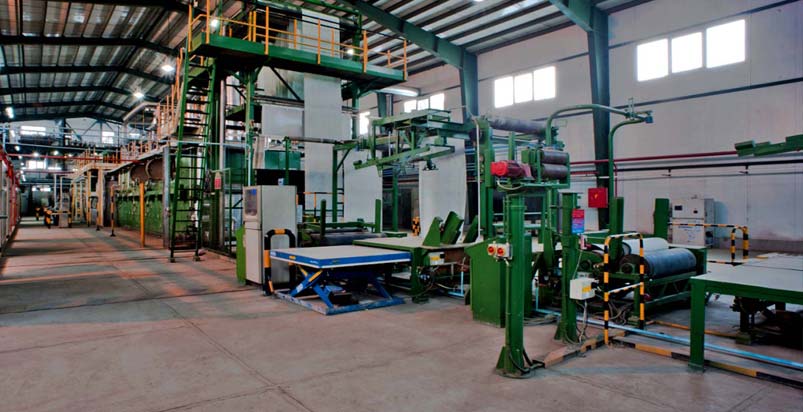
Polyethylene Terphetalate (PET) granules are extruded in the form of narrow fibers and tensed by jet pumps with a speed of 4000 m per minute to increase their strength, then it form a string like tissue with a definite pattern on a web and then forms a homogenous polyester with the entrance of needlers with thousands of thorny needles. To stabilize the dimensions and form a stronger polymeric bond, the polyester passes through kalander and is enhanced with the resin to attain light, resistant, flexible and unique polyester.
Polyethylene Terphetalate (PET)
Polyethylene Terphetalate is the most important member of the polyesters family produced by density polymerization of ethylenglycol and pure terphetalic acid. This polymer was first used in 1950’s separately in the UK and USA for producing synthetic fibers to be used in textile industries. Later, from the late 1970’s its structure was amended to be used in packaging industries like bottles, film, disposable vessels, and electronics/to make data storing films, and the like
Polyethylene Terphetalate polymer is usually commercialized in the form of chips or granules. This granule is transparent when amorph and semi-opaque when crystallized. Regarding the specifications of the products manufactured from PET, growth of its use on the globe is considerable.


